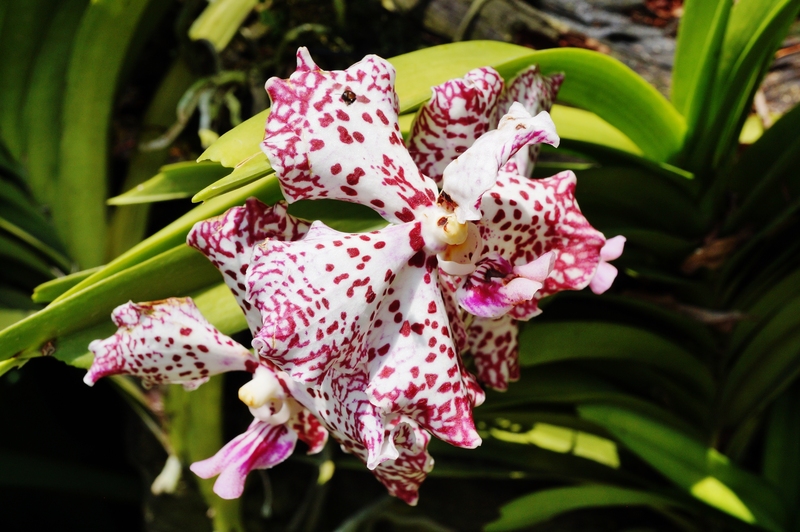Bioconversion: Organic Waste into Nutrient-Dense Earth
Posted on 28/05/2025
Bioconversion: Turning Organic Waste into Nutrient-Dense Earth
Bioconversion is revolutionizing the way we manage organic waste. With pressing global issues such as landfill overflow, greenhouse gas emissions, and soil degradation, bioconversion--transforming organic waste into nutrient-dense earth--is becoming an essential solution for environmental sustainability and agricultural productivity. In this comprehensive guide, we delve into the science, methods, and far-reaching impacts of bioconversion, offering you all the information you need to understand and embrace this powerful technique.
Understanding Bioconversion: What Does It Mean?
Bioconversion encompasses a set of biological processes that use living organisms, such as bacteria, fungi, and earthworms, to decompose organic materials--like food scraps, agricultural by-products, and yard waste--into valuable, nutrient-rich earth (compost or humus). Rather than sending waste to landfills or incinerators, these processes recycle organic matter, creating new life from what was once considered rubbish.
- Bioconversion of organic matter reduces environmental pollution.
- Transformation of waste creates sustainable resources for agriculture and landscaping.
- Converts biodegradable waste into high-quality soil amendments.
Core Principles of Bioconversion
- Microbial Activity: Microorganisms break down complex organic molecules into simpler, plant-available nutrients.
- Aerobic and Anaerobic Processes: Both oxygen-rich and oxygen-free environments facilitate diverse forms of decomposition.
- Ecological Recycling: Natural cycles return carbon, nitrogen, and other nutrients to the ecosystem.
Essentially, the conversion of organic waste into nutrient-enriched compost mimics nature's own recycling system, closing the loop between consumption and regeneration.

The Science Behind Bioconversion of Organic Waste
The bioconversion process relies on carefully managed biological reactions. As organic matter breaks down, a series of microbial, chemical, and physical changes occur, resulting in a dark, crumbly material full of vital plant nutrients.
Key Steps Involved:
- Collection and Preparation: Organic waste is gathered and sometimes pre-treated for optimal breakdown.
- Inoculation: Organisms like earthworms, bacteria, or fungi are introduced or naturally populate the waste.
- Decomposition: Organic materials undergo fermentation or composting, where they are broken down into simpler compounds.
- Curing and Maturation: Further microbial activity stabilizes and enriches the final product: nutrient-dense earth.
Each bioconversion pathway--composting, vermicomposting, anaerobic digestion, and others--has its specific microbial agents and environmental conditions, but all deliver the same outcome: transformation of waste into valuable soil amendments.
Types of Bioconversion Techniques
There are multiple methods employed for converting organic waste into fertile earth. The following are the most widely used approaches worldwide:
1. Composting
One of the oldest and most accessible forms of bioconversion, composting uses a diverse community of microorganisms (bacteria, fungi, actinomycetes) to break down organic materials under aerobic conditions.
- Suitable for yard trimmings, food scraps, paper products, and more
- Requires proper carbon/nitrogen balance, moisture, and aeration
- End product: Rich, stable humus that improves soil texture, water retention, and fertility
2. Vermicomposting
Vermicomposting leverages earthworms--primarily Eisenia fetida, or red wigglers--to digest organic waste. The result is a premium, finely textured compost (vermicast) packed with bioavailable nutrients and beneficial microbes.
- Effective for kitchen scraps, manures, and small-scale waste
- Produces worm castings, considered "black gold" for garden soils
- Requires specific moisture, temperature, and bedding materials
3. Anaerobic Digestion
Anaerobic digestion uses bacteria to degrade organic matter in the absence of oxygen. This pathway is ideal for managing high-moisture waste streams and simultaneously captures biogas (methane) for renewable energy.
- Excellent for food waste, municipal sludge, livestock manure
- Reduces odors and greenhouse gas emissions
- Produces digestate, a semi-solid by-product used as fertilizer
4. Black Soldier Fly Larvae (BSFL) Conversion
Black soldier fly larvae rapidly consume and transform various organic waste types, creating a high-protein feed and nutrient-dense frass (larval waste) valuable as organic fertilizer.
- Suitable for food and agricultural processing waste
- Produces both soil amendments and animal feed supplements
Benefits of Bioconversion for Environment and Agriculture
Adopting bioconversion of organic waste into nutrient-rich earth presents multifaceted benefits, proving crucial for both ecological health and agricultural productivity.
Environmental Advantages
- Reduces Landfill Loads: Every ton of diverted organic waste lessens the strain on landfill capacity, delaying the need for expansion and reducing management costs.
- Prevents Greenhouse Gas Emissions: Bioconversion prevents methane emissions produced by anaerobic decomposition in landfills, significantly lowering overall carbon footprints.
- Minimizes Leachate: Eco-friendly conversion methods eliminate the risk of contaminated runoff typical of conventional waste disposal.
Agricultural and Horticultural Gains
- Soil Enrichment: The resulting nutrient-dense earth revitalizes depleted soils, boosts microbial life, and enhances crop yields without synthetic inputs.
- Improved Soil Structure: Processed organic matter improves water retention, aeration, and root penetration, supporting healthy plant growth.
- Natural Pest and Disease Resistance: Compost and vermicompost suppress soil-borne pathogens, reducing reliance on chemical treatments.
Societal and Economic Benefits
- Job Creation: The bioconversion industry fosters new economic opportunities in waste management, agriculture, and technology development.
- Food Security: By improving soil health and productivity, nutrient-dense amendments support local and global food systems.
Bioconversion in Action: From Household to Commercial Scale
Today, organic waste bioconversion is being implemented at every level, from individual backyards to large municipal facilities. Here's how:
At Home: Composting and Vermiculture
- Families and individuals use compost bins, tumblers, or worm boxes to process kitchen and garden waste, yielding rich compost for houseplants and gardens.
- Educational programs promote composting awareness and teach practical skills for effective home bioconversion.
Community Initiatives
- Neighborhood composting centers and food scrap drop-offs empower urban populations to participate in organic recycling.
- Schools and community gardens leverage bioconversion to enrich local soils and foster environmental stewardship.
Industrial and Agricultural Operations
- Large-scale composting sites and anaerobic digesters process city-wide food and agricultural waste, supplying farmers with bulk compost and energy producers with biogas.
- Innovative farms adopt black soldier fly larvae systems to recycle farm by-products and generate natural fertilizers and feed.
Implementing Bioconversion: Practical Steps for Success
Whether you're a homeowner, community leader, or farmer, pursuing organic waste bioconversion offers a practical, impactful path toward sustainability. Here's how to get started:
1. Assess Your Organic Waste Stream
- What types and quantities of organic matter do you generate?
- Is the waste stream mostly food scraps, yard waste, or livestock manure?
2. Select an Appropriate Bioconversion Technique
- For small, diverse waste streams: Choose composting or vermiculture.
- For large, consistent waste streams: Consider commercial composting, anaerobic digestion, or BSFL.
- Review local regulations regarding composting and waste processing.
3. Set Up and Maintain Your System
- Invest in composters, worm bins, or digesters suited to your scale.
- Monitor temperature, moisture, and aeration to ensure optimal microbial activity.
- Regularly turn or feed the system as required.
4. Harvest and Apply the Nutrient-Dense Earth
- Allow compost or vermicast to mature; sift for consistency if needed.
- Amend garden beds, lawns, potted plants, and even agricultural fields with the finished product.
By taking these steps, you champion the circular economy and reduce reliance on chemical fertilizers and overburdened landfills.
Innovations and Challenges in Bioconversion
Recent Advances
- Automated composting systems for continuous processing and minimal labor
- Microbial inoculants designed to speed composting or improve nutrient profiles
- Enhanced biochar integration to increase carbon sequestration and soil fertility
- Efficient, scalable BSFL farms for waste management and animal nutrition
Key Challenges
- Contamination of organic waste streams with plastics, metals, or toxic substances
- Odor and vector control in densely populated areas
- Lack of standardization and quality control for compost products
- Education and engagement of the public in separating and recycling waste
Solving these challenges requires civic engagement, policy innovation, and continued scientific research to optimize bioconversion processes worldwide.
Impact on Sustainable Agriculture and Climate Change Mitigation
Bioconversion of organic waste into nutrient-dense earth directly contributes to sustainable agriculture and helps mitigate climate change:
- Soil Regeneration: Improved organic content and microbial diversity restores degraded soils and boosts long-term productivity.
- Reduced Dependence on Chemicals: Natural soil enrichment reduces the need for synthetic fertilizers and pesticides.
- Carbon Sequestration: Organic amendments lock carbon into the soil, offsetting greenhouse gas emissions.
- Water Conservation: Healthier soils require less irrigation and are more resilient to drought.
Farmers, gardeners, city planners, and environmentalists all benefit from the circular approach that organic waste bioconversion promotes. Each bag of compost or vermicast tells a story of rescued resources and renewed life, echoing the natural wisdom of recycling and regeneration.

Frequently Asked Questions on Bioconversion
What Is the Difference Between Composting and Anaerobic Digestion?
Composting is an aerobic process, relying on oxygen to fuel the breakdown of organic materials, typically producing heat and a stabilized humus. Anaerobic digestion occurs in an oxygen-free environment, resulting in biogas production as well as a nutrient-rich digestate used as fertilizer.
Which Wastes Cannot Be Processed by Bioconversion?
Non-biodegradable wastes like plastics, metals, glass, and certain chemicals are not suitable for bioconversion. These contaminants disrupt microbial activity and can degrade the quality of the end product.
How Long Does It Take to Convert Organic Waste to Compost?
Depending on the method, environment, and materials, typical composting takes between 2-6 months. Vermicomposting may finish in as little as 2-3 months under ideal conditions, while large-scale anaerobic digestion systems may process waste in a matter of weeks.
How Do I Use Compost or Vermicast in My Garden?
Mix mature compost or vermicast into planting beds, potting soils, or as top dressing for existing plants. This practice fosters healthy roots, improves moisture retention, and gradually releases nutrients throughout the growing season.
Conclusion: Creating Value from Waste, Nourishing the Earth
Bioconversion--translating organic waste into nutrient-dense earth--stands at the intersection of environmental protection, sustainable agriculture, and resource efficiency. By harnessing nature's own recyclers--microbes, worms, and insects--we transform waste burdens into opportunities for soil health, food security, and climate resilience. Embracing bioconversion in our homes, businesses, and communities is a vital step forward on the path to a greener, renewed planet. Remember, every handful of healthy soil starts as yesterday's leftovers--let's turn today's waste into tomorrow's abundance!

